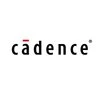
i
Cadence Design
Systems
Filter interviews by
Cadence Design Systems Interview Questions and Answers for Freshers
21 Interview questions
Reverse an array of strings
Create a new array and iterate through the original array in reverse order, adding each element to the new array
Use built-in array methods like reverse() or spread operator for a more concise solution
Ensure to handle edge cases like empty array or null values
Command to find lines with 'ERROR' in log file and copy to new file
Use grep command to search for 'ERROR' in log file: grep 'ERROR' logfile.txt
Use redirection to copy the output to a new file: grep 'ERROR' logfile.txt > newfile.txt
Latchup is a condition in integrated circuits where parasitic thyristors are inadvertently triggered, causing a high current flow.
Latchup can be resolved by adding guard rings around sensitive components to prevent parasitic thyristors from triggering.
Using layout techniques such as spacing sensitive components further apart can also help prevent latchup.
Properly designing the power distribution network and ensuri...
Antenna effect is the phenomenon where the gate of a transistor behaves like an antenna, causing unwanted signal interference.
Antenna effect occurs in integrated circuits due to the gate acting as an antenna and picking up external signals.
It can lead to performance degradation and reliability issues in the circuit.
To resolve antenna effect, techniques like adding shielding layers, changing layout design, and usin...
Em&IR stands for Emissions and Immunity in the context of design engineering. Resolving these issues involves identifying sources of electromagnetic interference and implementing mitigation techniques.
Em&IR refers to the study of electromagnetic emissions from electronic devices and their susceptibility to external interference.
Common sources of electromagnetic interference include power supplies, motors, and wire...
WPE stands for Water Pressure Equalization. It is a system used to maintain equal pressure in a water distribution network.
WPE helps prevent water hammer, which can damage pipes and fittings.
It ensures consistent water pressure throughout the network, even when demand fluctuates.
Regular maintenance of valves, pumps, and pressure regulators is essential to ensure the WPE system functions properly.
Higher metal jumps are preferred over lower metal jumps for resolving antenna issues due to better signal propagation and reduced interference.
Higher metal jumps provide better signal propagation and reduced interference compared to lower metal jumps.
Higher metal jumps help in achieving better antenna performance and coverage.
Lower metal jumps may result in signal degradation and increased interference.
Higher meta...
Block functionality of previous project involved data processing and storage. Layout started with floorplanning and power grid design.
Implemented data processing block using Verilog HDL
Designed storage block using flip-flops and registers
Started layout with floorplanning to allocate space for different blocks
Designed power grid to ensure proper distribution of power to all blocks
Performed physical design tasks suc...
To determine the metal width for routing, calculate the resistance and use it to find the required width.
Calculate resistance using R = ρ * (L/A), where ρ is the resistivity of the metal, L is the distance between blocks, and A is the cross-sectional area of the metal.
Use Ohm's Law (V = I * R) to find the voltage drop across the metal.
Finally, use the voltage drop and current to determine the required metal width.
LOD effect refers to the impact of line-of-sight distance on signal strength and quality in communication systems.
LOD stands for Line of Sight Distance, crucial in wireless communication.
Signal strength decreases with increased distance from the transmitter.
Obstacles like buildings can cause signal degradation, known as multipath fading.
Example: In urban areas, LOD effect can lead to poor mobile reception due to t...
Cadence Design Systems Interview Experiences for Freshers
10 interviews found
I appeared for an interview in Apr 2024.
(6 Questions)
- Q1. Introduce yourself
- Ans.
I am a passionate and experienced design engineer with a strong background in mechanical engineering.
Graduated with a degree in Mechanical Engineering from XYZ University
Worked for 5 years at ABC Company designing innovative products
Proficient in CAD software such as SolidWorks and AutoCAD
Strong problem-solving skills and attention to detail
Collaborated with cross-functional teams to bring projects to completion
- Q2. Explain matching and it type in detail with example. Why do we do matching.
- Ans.
Matching is the process of comparing two or more items to determine if they are the same or similar.
Matching involves comparing characteristics or features of items to find similarities or differences.
Types of matching include pattern matching, string matching, and image matching.
Matching is used in various fields such as computer science, psychology, and genetics.
Example: Matching fingerprints to identify a suspect in...
- Q3. Scenario: 2 blocks 100 um apart. current of 8 mA flows with 10 ohms resistance. What should be the metal width for routing.(Need to show the complete calculation)
- Ans.
To determine the metal width for routing, calculate the resistance and use it to find the required width.
Calculate resistance using R = ρ * (L/A), where ρ is the resistivity of the metal, L is the distance between blocks, and A is the cross-sectional area of the metal.
Use Ohm's Law (V = I * R) to find the voltage drop across the metal.
Finally, use the voltage drop and current to determine the required metal width.
- Q4. Explain block functionality of your previous project in detail and how your started your layout till tape out.
- Ans.
Block functionality of previous project involved data processing and storage. Layout started with floorplanning and power grid design.
Implemented data processing block using Verilog HDL
Designed storage block using flip-flops and registers
Started layout with floorplanning to allocate space for different blocks
Designed power grid to ensure proper distribution of power to all blocks
Performed physical design tasks such as ...
- Q5. Em&IR in detail and how these can be will resolved
- Ans.
Em&IR stands for Emissions and Immunity in the context of design engineering. Resolving these issues involves identifying sources of electromagnetic interference and implementing mitigation techniques.
Em&IR refers to the study of electromagnetic emissions from electronic devices and their susceptibility to external interference.
Common sources of electromagnetic interference include power supplies, motors, and wireless ...
- Q6. Write a command to find the lines containing the word "ERROR" from a log file and copy it to new file.
- Ans.
Command to find lines with 'ERROR' in log file and copy to new file
Use grep command to search for 'ERROR' in log file: grep 'ERROR' logfile.txt
Use redirection to copy the output to a new file: grep 'ERROR' logfile.txt > newfile.txt
(5 Questions)
- Q1. What is latchup and how it can be resolved
- Ans.
Latchup is a condition in integrated circuits where parasitic thyristors are inadvertently triggered, causing a high current flow.
Latchup can be resolved by adding guard rings around sensitive components to prevent parasitic thyristors from triggering.
Using layout techniques such as spacing sensitive components further apart can also help prevent latchup.
Properly designing the power distribution network and ensuring pr...
- Q2. What is Antenna effect and how it can be resolved.
- Ans.
Antenna effect is the phenomenon where the gate of a transistor behaves like an antenna, causing unwanted signal interference.
Antenna effect occurs in integrated circuits due to the gate acting as an antenna and picking up external signals.
It can lead to performance degradation and reliability issues in the circuit.
To resolve antenna effect, techniques like adding shielding layers, changing layout design, and using gua...
- Q3. Why do we go for higher metal jump not for lower metal jump for resolving Antenna.
- Ans.
Higher metal jumps are preferred over lower metal jumps for resolving antenna issues due to better signal propagation and reduced interference.
Higher metal jumps provide better signal propagation and reduced interference compared to lower metal jumps.
Higher metal jumps help in achieving better antenna performance and coverage.
Lower metal jumps may result in signal degradation and increased interference.
Higher metal jum...
- Q4. Explain WPE and how it can be taken care.
- Ans.
WPE stands for Water Pressure Equalization. It is a system used to maintain equal pressure in a water distribution network.
WPE helps prevent water hammer, which can damage pipes and fittings.
It ensures consistent water pressure throughout the network, even when demand fluctuates.
Regular maintenance of valves, pumps, and pressure regulators is essential to ensure the WPE system functions properly.
- Q5. What is LOD effect(I was unable to answer this one)
- Ans.
LOD effect refers to the impact of line-of-sight distance on signal strength and quality in communication systems.
LOD stands for Line of Sight Distance, crucial in wireless communication.
Signal strength decreases with increased distance from the transmitter.
Obstacles like buildings can cause signal degradation, known as multipath fading.
Example: In urban areas, LOD effect can lead to poor mobile reception due to tall s...
(2 Questions)
- Q1. Asking regarding the gap in my career.
- Q2. Am I comfortable with job location.
- Ans.
Yes, I am comfortable with the job location.
I have researched the area and feel it is a good fit for me.
I have visited the location and liked what I saw.
I am willing to relocate if necessary for this opportunity.
Interview Preparation Tips
2. Whenever you do your job try to corelate it with your theoretical knowledge. In interview you will be able to explain in detail with practical knowledge.
3. Believe in yourself.(This is what you need the most)
Skills evaluated in this interview
I applied via Campus Placement and was interviewed in Mar 2024. There were 3 interview rounds.
(1 Question)
- Q1. CGPA over 8 was the criteria
Logical Reasoning, Verbal Reasoning , Quantitative Ability, Digital Electronics
DSP, C, Verilog, Digital Design
(5 Questions)
- Q1. Array addition of two numbers
- Ans.
Add two numbers represented as arrays
Iterate through the arrays from right to left, adding digits and carrying over if necessary
Handle cases where one array is longer than the other
Return the result as a new array
- Q2. Access modifiers in java
- Ans.
Access modifiers in Java control the visibility of classes, methods, and variables.
There are four types of access modifiers in Java: public, protected, default (no modifier), and private.
Public: accessible from any other class.
Protected: accessible within the same package or subclasses.
Default: accessible only within the same package.
Private: accessible only within the same class.
Example: public class MyClass {}
- Q3. Complete code of all projects
- Ans.
It is not common practice to provide complete code of all projects in an interview setting.
It is not recommended to share complete code of all projects due to confidentiality and intellectual property concerns.
Instead, focus on discussing the technologies used, challenges faced, and solutions implemented in your projects.
Provide code snippets or high-level overviews of your projects to showcase your skills and experien...
- Q4. Deep learning- Yolov5 architecture, details on kernel size, reason for choosing Yolov5, preprocessing techniques
- Q5. BLE(Bluetooth Low Energy), Macros in C
Skills evaluated in this interview
Medium coding qs with technical interview
(1 Question)
- Q1. Reverse an array
I applied via Job Portal and was interviewed in Jan 2024. There was 1 interview round.
(2 Questions)
- Q1. Write a c program on fibbonacci series
- Ans.
A C program to generate Fibonacci series
Declare variables to store current and previous Fibonacci numbers
Use a loop to calculate and print Fibonacci numbers
Handle edge cases like 0 and 1 separately
- Q2. Design a up counter circuit
- Ans.
A up counter circuit is a digital circuit that counts upwards in binary sequence.
Use flip-flops to store the count value
Connect the output of one flip-flop to the clock input of the next flip-flop
Use logic gates to control the counting sequence
Add a reset input to clear the count when needed
Interview Preparation Tips
Skills evaluated in this interview
I applied via Recruitment Consulltant and was interviewed in May 2024. There was 1 interview round.
(1 Question)
- Q1. Questions based on digital design verilog, sv, SVA, Linting, etc were asked
I applied via Campus Placement

(3 Questions)
- Q1. OOPS questions , project related questions , linked list , trees
- Q2. Verilog coding questions
- Q3. Digital electronics and signal ans systems
(2 Questions)
- Q1. Macros in depth , technical c++ and dsa questions , verilog coding
- Q2. Project related questions , general design questions
I applied via Naukri.com and was interviewed before Jun 2022. There were 3 interview rounds.

(2 Questions)
- Q1. Technical question asked
- Q2. Technology related studies
(1 Question)
- Q1. Presentation given in technical topic
Interview Preparation Tips
Interview Questionnaire
3 Questions
- Q1. Basic data structures
- Q2. Exception handling, linked list
- Q3. Graph colouring
Interview Preparation Tips
I appeared for an interview before Sep 2020.
(3 Questions)
Round duration - 30 minutes
Round difficulty - Easy
- Q1. How do you search for a node in a linked list?
- Ans.
To search for a node in a linked list, iterate through the list and compare each node's value with the target value.
Start at the head of the linked list
Iterate through each node by following the 'next' pointer
Compare the value of each node with the target value
Return the node if found, otherwise return null
- Q2. How do you detect a loop in a linked list?
- Ans.
To detect a loop in a linked list, we can use Floyd's Cycle Detection Algorithm.
Initialize two pointers, slow and fast, at the head of the linked list.
Move slow pointer by one step and fast pointer by two steps.
If there is a loop, the two pointers will eventually meet.
Alternatively, we can use a hash set to store visited nodes and check for duplicates.
- Q3. Implement a stack using a singly linked list.
- Ans.
Implement a stack using a singly linked list
Create a Node class with data and next pointer
Create a Stack class with top pointer pointing to the top of the stack
Implement push, pop, and peek operations by manipulating the linked list
Example: Node class - Node { int data; Node next; }
(2 Questions)
Round duration - 40 minutes
Round difficulty - Easy
- Q1. What is the top view of a binary tree?
- Ans.
The top view of a binary tree shows the nodes visible from the top when looking down from the root node.
The top view of a binary tree is the set of nodes visible from the top when looking down from the root node.
Nodes at the same horizontal distance from the root are considered at the same level in the top view.
If multiple nodes are at the same horizontal distance, only the topmost node at that level is included in the...
- Q2. Explain the process of deleting a node from a linked list, covering all possible cases.
- Ans.
Deleting a node from a linked list involves updating pointers to maintain the list's integrity.
Identify the node to be deleted by traversing the list
Update the previous node's next pointer to skip the node to be deleted
Free the memory allocated to the node to be deleted
Interview Preparation Tips
Do practice a lot of questions on linked list and stacks as these are two most important data structures asked in the interview. Also, try to implement it yourself without seeing the solution. Also prepare for Computer Science subjects like Operating System, Database Management System, Computer Networks, etc. I prepared them through Coding Ninjas notes which were simpler and easy to understand.
Application resume tips for other job seekersKeep your resume short and up to mark and check spellings before submitting it for the interview process.
Final outcome of the interviewSelectedSkills evaluated in this interview
Interview Preparation Tips
Experience: CGPA > 8.5
HR oriented phase with emphasis on communication abilities
Round: Technical Interview
Experience: Quantitative and aptitude sections based on thorough knowledge of the fundamentals of the course. Try to concentrate on the procedure rather than the final result.
Round: HR Interview
Experience: A personal interview about yourself.
General Tips: Bond duration : 1 year
Probable place of posting : Noida
They did ask about these:
Internship at IBM SRDC on “High Performance Multiport Inductor”
Main Project On “Design of Fourth Order Resonant Tank Circuit”.
Skills: C, C++
College Name: IIT KHARAGPUR
Top trending discussions






Cadence Design Systems Interview FAQs
Some of the top questions asked at the Cadence Design Systems interview for freshers -
The duration of Cadence Design Systems interview process can vary, but typically it takes about less than 2 weeks to complete.
Tell us how to improve this page.
Cadence Design Systems Interviews By Designations
- Cadence Design Systems Software Developer Interview Questions
- Cadence Design Systems Design Engineer Interview Questions
- Cadence Design Systems Intern Interview Questions
- Cadence Design Systems Softwaretest Engineer Interview Questions
- Cadence Design Systems Software Engineer Interview Questions
- Cadence Design Systems Software Engineer Intern Interview Questions
- Cadence Design Systems Test Engineer Interview Questions
- Cadence Design Systems Senior Software Engineer Interview Questions
- Show more
Interview Questions for Popular Designations
- Software Developer Interview Questions
- Design Engineer Interview Questions
- Team Lead Interview Questions
- Software Engineer Interview Questions
- Sales Executive Interview Questions
- Consultant Interview Questions
- Graduate Engineer Trainee (Get) Interview Questions
- System Engineer Interview Questions
- Show more
Overall Interview Experience Rating
based on 7 interview experiences
Difficulty level
Duration
Interview Questions from Similar Companies
Cadence Design Systems Reviews and Ratings
based on 298 reviews
Rating in categories
|
Lead Software Engineer
159
salaries
| ₹25.2 L/yr - ₹43.4 L/yr |
|
Principal Software Engineer
117
salaries
| ₹24.9 L/yr - ₹60 L/yr |
|
Software Engineer2
116
salaries
| ₹16.6 L/yr - ₹29 L/yr |
|
Design Engineer
101
salaries
| ₹17 L/yr - ₹23.2 L/yr |
|
Software Engineer
92
salaries
| ₹14.1 L/yr - ₹26 L/yr |

Synopsys

Qualcomm

Intel

Molex
- Home >
- Interviews >
- Cadence Design Systems Interview Questions >
- Cadence Design Systems Interview Questions for Fresher












